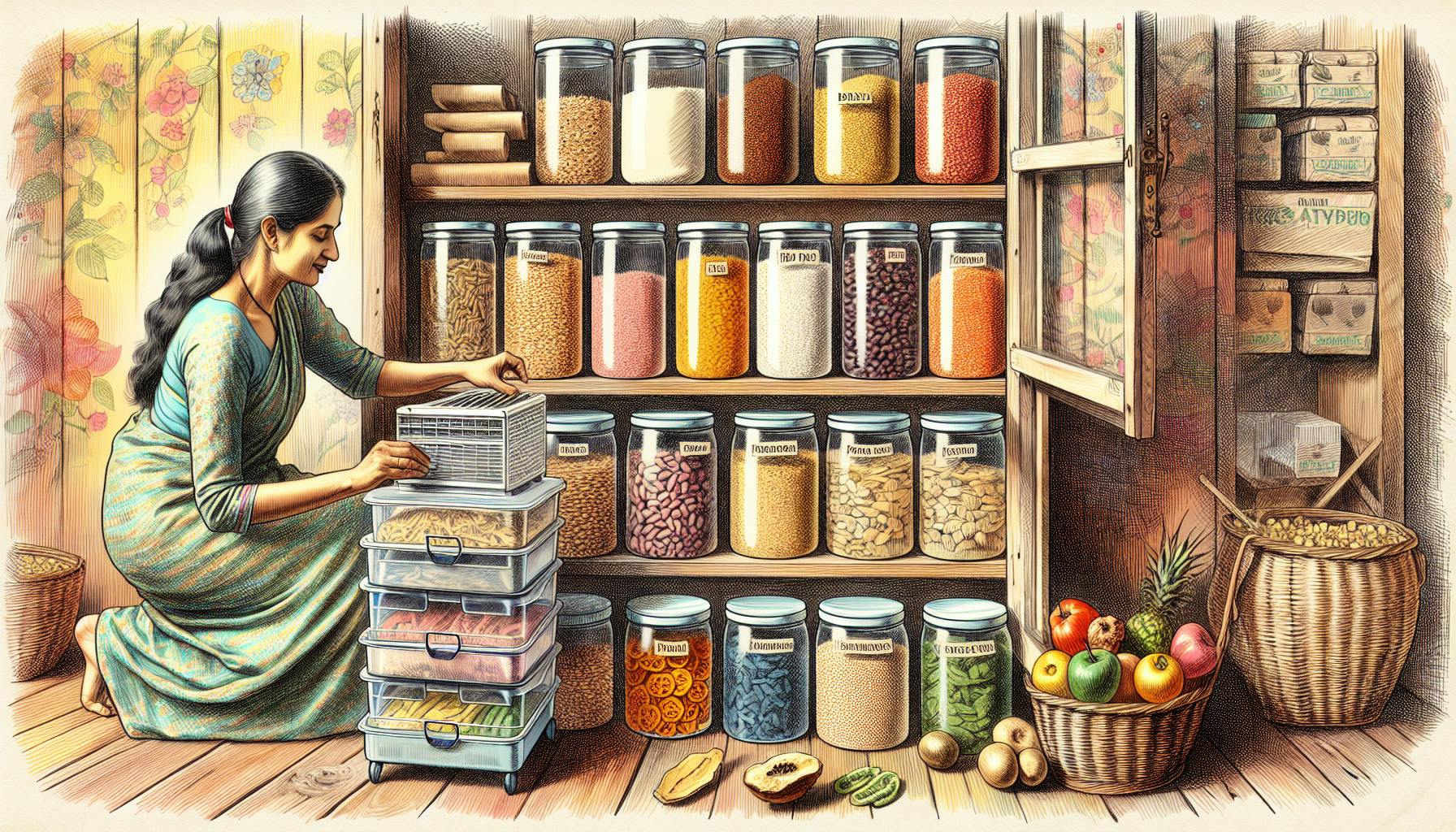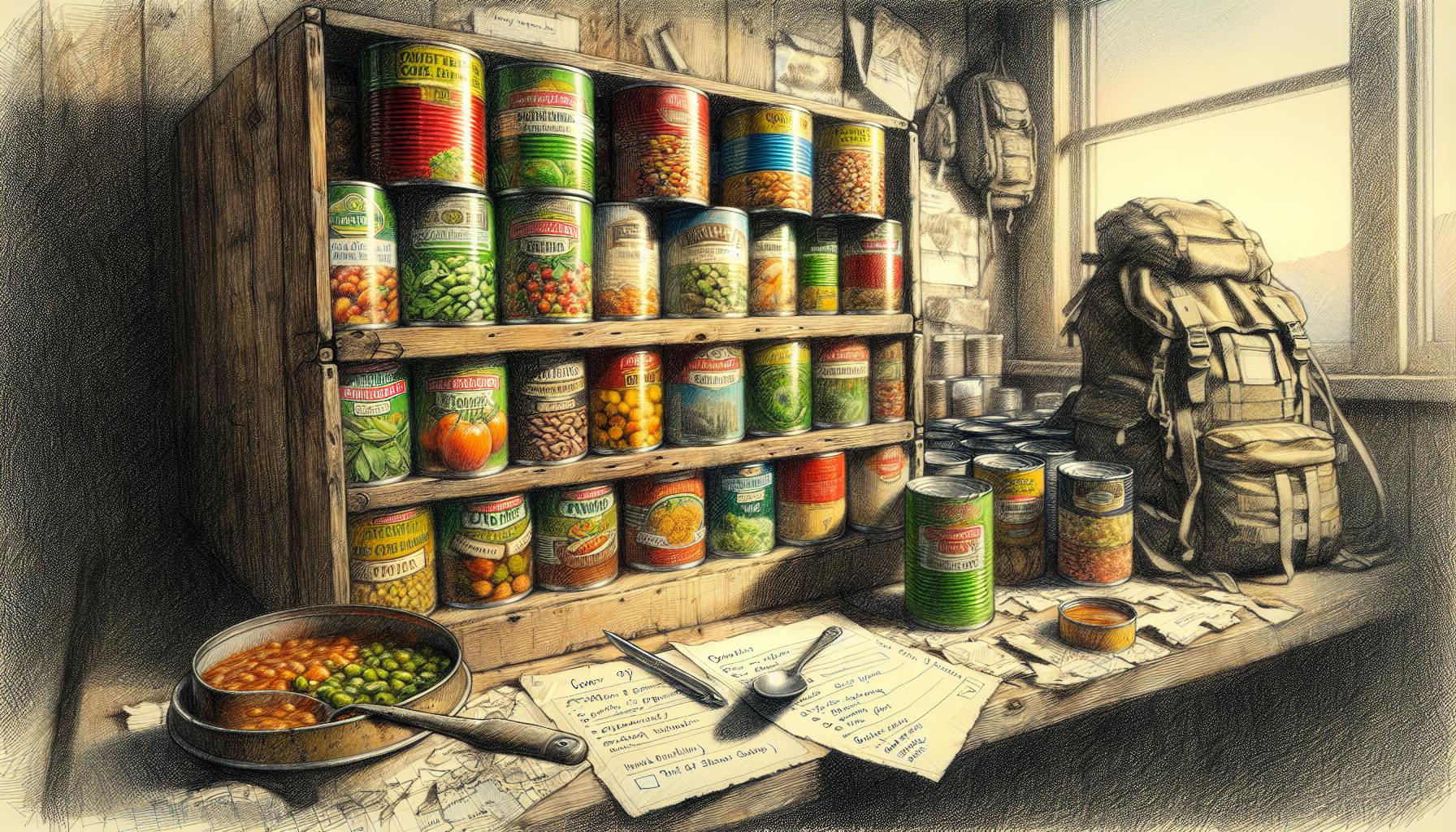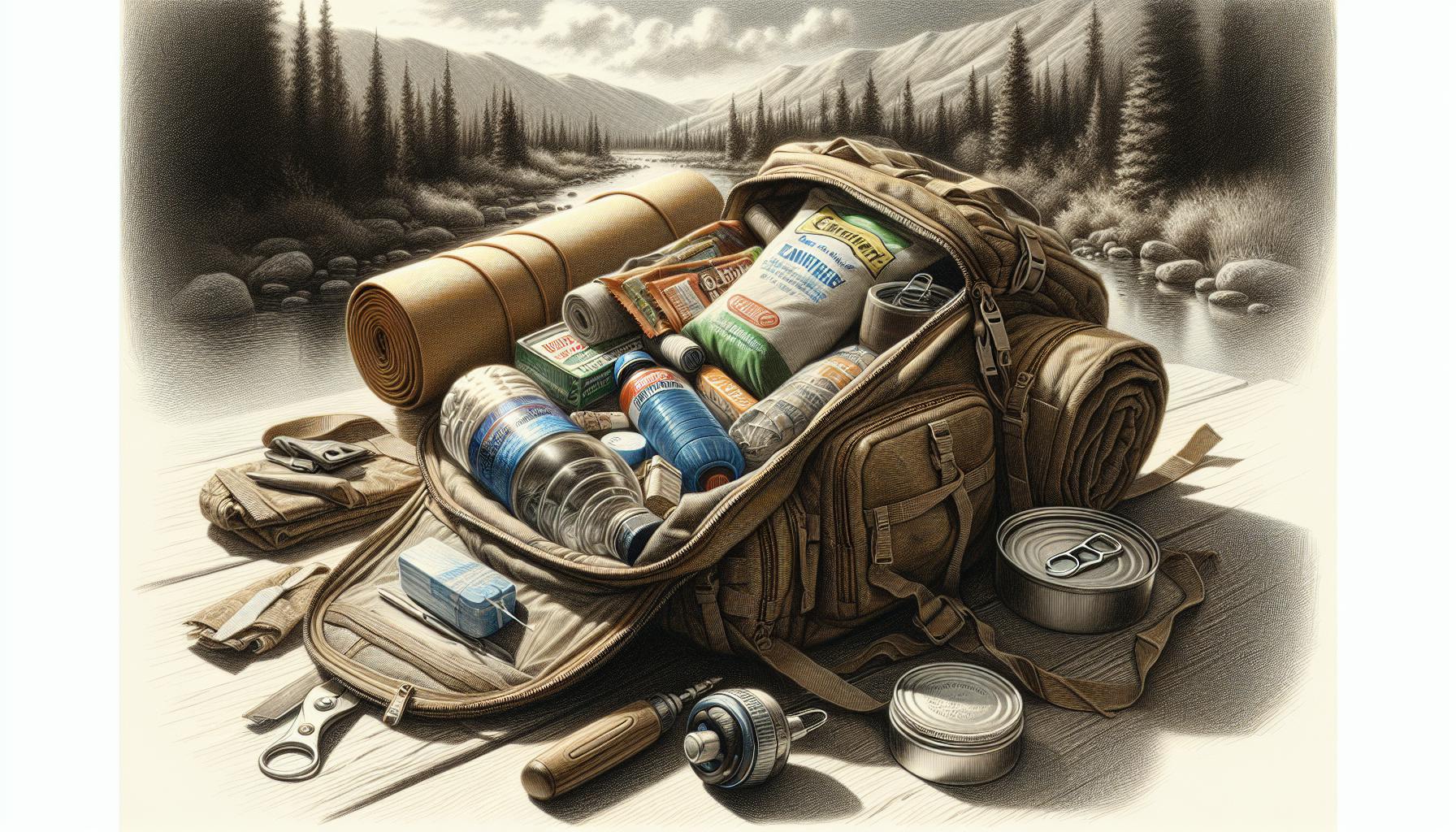Introduction:
Having a well-stocked emergency kit is a critical part of disaster preparedness. Canned foods play an essential role in any emergency kit by providing nutritious, hearty options with an extended 2-5 year shelf life compared to other perishable food items. Canned goods are conveniently portable, can be safely eaten cold if needed, and require no refrigeration. The goal of this article is to explore the optimal canned food choices that offer the best nutritional balance, taste, and longevity when stocking an emergency kit. Key factors to consider include a food's nutritional value, palatability, and prolonged shelf life. When selecting canned goods for emergency preparedness, it's important to choose nutrient-dense options packed with protein, fiber, key micronutrients, and healthy fats. Taste is also an important consideration, as familiar, appetizing foods can provide comfort and a morale boost in stressful situations. Finally, canned goods' longevity allows kits to stay ready for use over 2-5 years when properly stored in a cool, dry place around 75°F. With the right assortment of nutritionally balanced, delicious, and shelf-stable canned goods, you can feel assured your emergency kit will provide reliable, nourishing meals when circumstances demand it. Prioritizing emergency food preparedness provides invaluable peace of mind and resilience.
Canned Meats
Canned meats like tuna, chicken, and Spam provide essential protein and nutrients in an emergency food supply. Here are some top options:
-
Spam: Spam is high in protein and fat, providing long-lasting energy. With proper storage, it lasts 2-5 years in the can. The salty, comfort food flavor makes it craveable for many.
-
Tuna: Packed in water or oil, tuna offers versatile, lean protein. Canned tuna will keep for 2-5 years and provides omega-3s and vitamin D. Look for low-mercury options like skipjack tuna.
-
Sardines: Canned sardines are packed with omega-3 fatty acids and conveniently shelf-stable.
-
Chicken: Canned chicken comes in convenient chunks or shreds, in both white and dark meat. It's a lean protein source that stores well for years.
-
Beef stew: Hearty canned stews with beef, potatoes, carrots, and other vegetables provide comfort food full of protein.
-
Salmon: Packed with healthy fats like omega-3s, salmon has a rich flavor and tender texture. It will last 2-3 years when properly stored.
Canned Fruits
Fruits canned in juice or light syrup provide essential vitamins and sweetness without added sugars:
-
Canned pears: Buttery, sweet pears hold their shape and texture well during canning.
-
Canned mandarin oranges: Sweet, easy-to-eat segmented oranges are a nice treat.
-
Canned pineapple: Tart and sweet pineapple rings or chunks, plus the juice, add flavor.
-
Canned peaches: Soft, sweet peaches are available sliced, diced, or halved in light syrup or juice.
-
Canned fruit cocktail: A budget-friendly mix of diced peaches, pears, grapes, and cherries.
-
Fruit salad: Mix and match fruits like peaches, pears, pineapple for variety.
Canned Vegetables
Non-perishable canned vegetables add vitamins, minerals, and fiber, with a shelf life of 2-5 years. Rotate stock to maximize freshness:
-
Canned green beans: A versatile vegetable that stores for 3-5 years. Green beans provide vitamin C.
-
Canned corn: Starchy, sweet corn has a pleasing texture and lasts 2-3 years canned.
-
Canned carrots: Packed with beta carotene, carrots store well and complement many dishes.
-
Canned peas: Sweet green peas pair well with many meals and add plant-based protein.
-
Canned tomato products: Tomato sauce, diced tomatoes, paste, and soup provide lycopene.
Canned Beans and Legumes
Beans offer protein, fiber, and a long shelf life. Rinsing and draining reduces sodium content:
-
Kidney beans: A chili staple, kidney beans provide iron, fiber, and plant-based protein.
-
Black beans: Soft, creamy black beans work well in Mexican cuisine. They provide ample fiber.
-
Chickpeas: Chickpeas, also called garbanzo beans, can be blended into hummus. They supply protein and fiber.
-
Baked beans: Slow-burning carbs in saucy baked beans complement many meals.
-
Lentils: High in protein and fiber but low in fat, earthy lentils transform into stews and veggie burgers.
Other Canned Goods
Other convenient canned foods provide comfort, carbs, and options:
-
Canned pasta: Quick, filling meals come from canned ravioli, spaghetti, and more. Seek gluten-free options if needed.
-
Canned soup: Chicken noodle, tomato, chili, and hearty stews pack comfort and calories.
-
Canned chili: Look for chili made with beans, beef, turkey, or vegetarian varieties packed with spices.
-
Instant mashed potatoes: Rehydrated potatoes offer familiar, filling carbs.
-
Canned hash: Try corned beef or turkey hash for a hearty blend of meat and potatoes.
-
Powdered milk: Adds protein, calcium, and versatility for cooking.
Nutritional Considerations
When selecting canned goods, keep these nutrition tips in mind:
-
Seek low-sodium options packed in water rather than syrups or oils whenever possible. Sodium causes high blood pressure.
-
Balance carbs, fiber, protein, and healthy fats for sustained energy and satiety. Complex carbs and fiber prevent spikes and crashes.
-
Include antioxidant-rich fruits and veggies for essential vitamins and minerals often lacking in shelf-stable foods.
-
If relying heavily on canned goods, also pack a multi-vitamin to help fill any nutritional gaps.
-
Go for canned fish high in omega-3 fatty acids, vitamin D, and protein like salmon and sardines.
High Protein Foods
Good sources of protein include:
-
Beans like kidney, black, and baked beans which offer plant-based protein and fiber.
-
Canned tuna, salmon, chicken, turkey, and other meats provide lean, filling protein.
-
Look for tuna with lower mercury risk like skipjack or chunk light.
-
Chili with beans and beef or turkey delivers protein, spices, and heartiness.
-
Spam and corned beef hash give a meaty protein boost to any meal.
Fiber Sources
Fill up with fiber from these canned foods:
-
Beans and lentils like garbanzos, black beans, and kidney pack an fiber punch.
-
Canned fruits like pineapple and pears include fiber while satisfying sweet cravings.
-
Starchy veggies like potatoes and corn found in stew provide complex carbs.
-
Try tomato sauce and paste which offer the antioxidant lycopene and fiber.
-
Seek whole grains like baked beans, whole wheat pasta, and brown rice.
Vitamin Powerhouses
Vitamins abound in these canned goods:
-
Fruits like peaches, pears, mandarin oranges, and pineapple have vitamin C.
-
Veggies like tomatoes, green beans, spinach, peas, and carrots provide A, C, K.
-
Beans offer key nutrients like folate, potassium, and iron.
-
Canned fish like salmon and tuna have vitamin D and omega-3 fatty acids.
-
For canned vegetables, low-sodium or "no salt added" help limit blood pressure issues.
Avoiding Additives
Watch out for unwanted additives by:
-
Seeking BPA-free cans to minimize chemical exposure from linings.
-
Choosing low or no salt added canned goods to reduce risk of high blood pressure.
-
Selecting fruits canned in juice rather than heavy, sugary syrups.
-
Prioritizing tuna and fish packed in water over oil to reduce fat intake.
-
Reading labels closely and avoiding cans with preservatives when possible.
Special Dietary Needs
Accommodate special diets with options like:
-
Gluten-free pasta, soups, chili, and baked beans.
-
Lower sugar fruit for diabetics or weight loss goals.
-
Reduced sodium beans and veggies by rinsing before use.
-
Tuna, salmon, or chicken canned in water to cut fat.
-
Vegetarian and vegan chili, soups, and veggie burgers.
Storage and Shelf Life Considerations
Proper storage preserves canned food integrity and prolongs shelf life up to 2-5 years:
-
Store cans in a cool, dry place like a basement around 75°F. Avoid temperature fluctuations.
-
High acid foods like tomatoes degrade more quickly than less acidic items.
-
Use a "first in, first out" system to cycle older cans to the front. Mark cases with purchase dates.
Maximizing Shelf Life
Use these tips to extend canned food shelf life:
-
Keep canned goods in a dry, temperature controlled basement around 75°F. Avoid freezing or overheating.
-
Steady, moderate temps are ideal. Store in plastic totes or sealed bins to protect from light, dust and insects.
-
Before stocking, clean and thoroughly dry cans to prevent corrosion from moisture.
-
Separate tomatoes and other acidic foods which degrade more quickly than less acidic items.
Signs of Spoilage
Watch for these signs of spoiled canned goods:
-
Bulging or leaking cans indicate bacteria growth causing gases and breaches.
-
Rust or corrosion signify the can's seal has been compromised and contents contaminated.
-
Foul odors when opened also suggest spoilage has occurred. When in doubt, play it safe and discard.
-
When initially storing, ensure all seals are intact. Dents can also impact integrity over time.
-
If any signs of spoilage appear, immediately discard the can contents to err on the side of caution.
Stock Rotation
Use a stock rotation system to cycle canned goods:
-
Use "first in, first out" to move older inventory to front and used sooner.
-
Label cases or storage bins with purchase dates for easy reference.
-
For best quality and nutrition, plan to use canned goods within 1 year.
-
Have a plan to periodically cycle in new cans before old ones pass prime.
-
Donate unopened, nonperishables nearing expiration to local food banks.
Can Openers
Reliable can openers are a must:
-
Manual openers require no power, operate silently, and are easily portable. Have several on hand.
-
Look for solidly built handheld openers that run smoothly. Test before buying.
-
Electric openers quickly open several cans. But avoid battery operated models susceptible to failure.
-
Have a non-electric manual opener as backup in case power openers become unusable.
Preparing Canned Goods
Safely prepare canned foods:
-
Wash can tops before opening to prevent illness from dirt and bacteria. Use clean work surfaces.
-
Transfer contents to plates rather than eating directly from can to avoid chemical lining exposure.
-
Rinse beans, veggies, tuna to remove excess sodium, preservatives, and improve taste.
-
Season creatively with spices, herbs, hot sauce, etc. to liven up canned food flavors.
-
Pair canned proteins like tuna with rice, quinoa, instant mashed potatoes, or pasta for balanced meals.
Emergency Kit Planning Considerations
Factor in these key points when planning canned goods for emergency kits:
-
Prioritize ready-to-eat foods requiring minimal tools and preparation.
-
Ensure you have the needed can opener, utensils, pots, stove, and fuel to prepare meals.
-
Include foods that meet various dietary needs like gluten-free, vegetarian, etc.
-
Incorporate comfort foods and familiar favorites to help relieve stress.
-
Balance nutrition, cost, shelf life, and convenience when stocking your kit. Set a realistic budget.
-
Practice cooking with canned goods and rotate stock as expiration dates near.
Food Safety
Employ food safety best practices:
-
Pack clean water for washing hands, surfaces, dishes, and canned tops. Replace regularly.
-
Have paper plates, bowls, towels, and hand sanitizer to prevent illness.
-
Use a cooler with ice packs to keep perishables like meats cold and safe.
-
Store raw and cooked foods separately to avoid cross-contamination.
-
Wash hands, utensils, surfaces frequently to prevent foodborne illness.
Cooking Capabilities
Prepare for cooking with:
-
Portable propane or butane cook stove and adequate fuel supply. Practice using it.
-
Pots, pans, can opener, knives, cutting board, plates, cups, utensils for preparation.
-
Manual can opener, sharp knife, and multi-purpose tool as backup.
-
A sunlight oven or solar cooker if conditions allow renewable cooking.
-
Fire starting supplies like matches, lighters, tinder, kindling if cooking over flame.
Morale and Comfort
Lift spirits with:
-
Familiar, comforting foods from home like favorite snacks, candy, sweeteners.
-
Morale-boosting drinks like coffee, tea, powdered milk, electrolyte mixes.
-
Spices, seasonings, condiments to improve canned food flavors.
-
Shelf-stable treats like cookies, crackers, nuts, dried fruit.
-
Hot sauce, ketchup, mustard, mayo to customize taste.
Special Needs
Accommodate special needs:
-
Lactose-free milk, gluten-free pasta and baking mixes.
-
Extra batteries for medical devices and flashlights.
-
Glucose tabs, test strips, medications for diabetics.
-
Prescriptions, OTC meds, toiletries, hygiene items.
-
Portable radio, playing cards, books for entertainment.
Kit Customization
Tailor your canned food kit:
-
Include family food preferences and meet dietary needs.
-
Factor in climate risks like earthquakes, snow storms, heat waves.
-
Calculate supplies needed based on group size and length of stay.
-
Compare pre-packed commercial kits vs. customizing your own.
-
Practice using the emergency kit and cooking with canned goods. Rotate regularly.
Conclusion
Canned goods are an indispensable component of an effective emergency kit when selected for optimal nutrition, taste, and longevity. With a shelf life of 2-5 years when properly stored in a cool, dry place, canned foods like fruits packed in juice, low-sodium beans and vegetables, and omega-3 rich fish provide reliable, nourishing meals when needed most. Follow best practices for maximizing shelf life through temperature control, rotating stock, and monitoring for signs of spoilage. Ensure you have the necessary tools for safe preparation like a manual can opener, pots and utensils, and a way to cook meals. Tailor your canned goods to meet dietary needs, taking into account your cooking capabilities. Well-chosen canned foods ready to be opened and eaten will give you confidence in being prepared for emergencies. Disaster preparedness with shelf-stable canned goods brings invaluable peace of mind.


